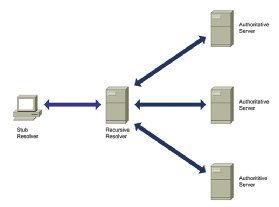What is my DNS and how is it used?
You might have heard the term ‘DNS’ before when referring to website hosting, or in reference to the way that you connect to the internet. If it’s all Greek to you, however, then read on – as we will explain here what exactly a DNS is, and how it is used in this context.
What is a DNS?
Let’s start with the basics. DNS stands for Domain Name Server. A DNS is actually a directory, which keeps a list of domain names and then translates them into IP addresses. IP stands for Internet Protocol, and all machines access website based on their IP address. However, an IP address is a string of random numbers, which means they aren’t so easy to remember.
That’s why we come up with domain names. These catchy words and phrases are much easier to remember, and much easier to type in and understand. They can also be a lot shorter than an IP address, so there are lots of advantages to using a domain name instead. But for a machine to be able to read a domain name and take you to the right address, it first needs to know which IP address it is linked to.
That’s where the DNS comes in. This list is kind of like having a phone book – it is a directory of domain names listed against IP addresses, so a machine can easily read the information and move you ahead to the right place.
There’s also a Central Registry, which gathers together all of the information about IPs and domains from across the internet. Host companies and Internet Service Providers (ISPs) will go to the Central Registry for updates on all the DNS information that they need to ensure you’re getting a good service.
How does it work?
So, let’s recap. First, you type in a web address – something like domainname.com. Next, your ISP goes to look at your DNS and sees the IP address listed alongside it – in the format of 999.999.999.99. Then, your ISP directs you to that address so that you see the right website.
When you register a new domain name, or when you update your DNS servers on an existing domain name, this information is recorded in the Central Registry. Over the next 12 to 36 hours, domain name servers around the world will be updated according to the Central Registry and will receive this new information. The period of up to 36 hours during which the information is disseminated is known as propagation.
You can think of it in terms of looking up a person’s contact details before the internet. If you knew what they were called, you could go to the phone book and look up their name to get their address and telephone number. Every year or so, you would receive a new telephone book which had been updated with all of the latest data for people in your local area. This is the same kind of concept, except now it is done much faster and on a much larger scale, servicing the whole of the internet and much larger chunks than you would have seen in your phone directory.
How can it go wrong?
A word of caution, now, about how a DNS can actually be used against you. If your security is not up to a good standard, then you might find your computer infested with malware – something that you never want at the best of times. When it attacks your DNS, however, it can make things a lot worse. The malware can actually end up changing your DNS server settings, so that you are going to a website that is completely different to the one that you think you’re accessing.
Imagine if you thought you were on your bank’s website, but you were actually on a dupe which collected login information. It could be catastrophic!
Conclusion
So, there you have it – now you can understand what a DNS is, and how it helps people to arrive at your website. You can also perhaps understand why it takes a little while to update, sometimes, and why it’s important to have everything set up properly before you attempt to launch a website.


Leave a Reply